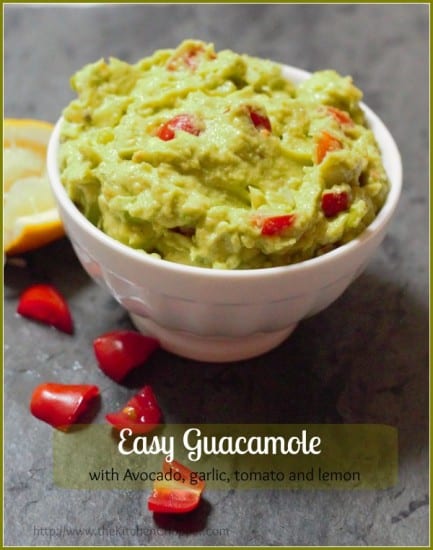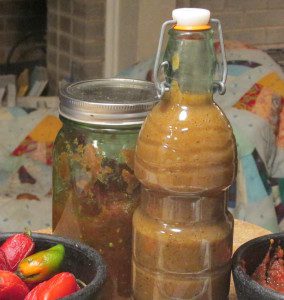On the podcast we not only cover this topic, but we also have an answer from our Rural Round Table. Our chicken expert answers "Can you use chickens to control ticks?" Check it out and subscribe. If you enjoy it consider leaving a review on either iTunes or Stitcher.
One of the things I like to do is take an object, any object and try to figure out as many uses for it as possible. Is this a preparedness exercise? Yeah, I guess it is, but it is also an exercise in creative thinking and problem solving. This process can be done with anything. I have already done this with handkerchiefs and vet wrap, now I am going to take on garbage bags. How many will I come up with? At this point I don't know. I have a list, but I am sure more will come to mind as I go along. For the purposes of this exercise we are going to consider the non scented variety. Ready for the adventure?
The Container
For this category it really doesn't matter if we are talking about the white, black, or the clear garbage bags. When one of my suggestions requires one over the others I will let you know.1. Of course use it for garbage. It just goes to reason if we are talking about a garbage bag that we should be able to use it for all of the stuff that needs to go away.
2. Laundry basket. There have been many a college student that have figured this one out. When their clothes get so disgusting that they cannot stand them anymore, they just stuff them all in a garbage bag and make the trek back home to have mom or dad do their laundry.
3. Make do luggage. I have done this one a few times myself. You are planning on going somewhere, but don't have any luggage and either don't have time or money to purchase any, a garbage bag will serve the purpose. Yes your clothes will be really wrinkled, but very few young people care about such trivial matters.
4. Temporary Backpack. Yup, it is related to the make do luggage, but you can use any garbage bag as make do luggage but if you are wanting to use them as a temporary backpack you will need the ones with the drawstring. As long as the load isn't too heavy and you are not traveling through brush or a wooded area, it will actually work fine.
5. Collect Rainwater. Just spread it out while it is raining. The water will gather and you will be able to use it.
6. Store Water. I know its not perfect, but it will do the job.
7. Forage collection. If you are out and about and come up on say a large stand of blackberries that are perfectly ripe. I for one wouldn't want to pass that opportunity up, but I have no basket. If I have a clean garbage bag either in my backpack or in my vehicle, I am good to go.
8. Emergency Toilet. I don't know if you have ever been in a situation where there was no place to go....well you know relieve yourself. Maybe the plumbing is out or whatever. For me it isn't a big deal to just go in the woods or high grass and take care of what needs to be done. For others this is very challenging. A bucket and a garbage bag and you have an emergency toilet. If you add to that either sawdust/wood chips or the blue stuff that is used in RV toilets you have something that can be maintained without all the stink. Once the event passes just toss the garbage bag.
9. Grocery Bag. There are more and more stores that are charging for grocery bags, we even have one fairly close. We use grocery bags for garbage bags so why not the other way around. Garbage bags are way more durable than the thin little bags they provide.
10. Short-term Food Storage. I really mean short term, but if you have nothing else this is a way to reduce the likelihood that insects will get into your food.
11. Hanging Food in a Tree. If you are in an area that has bears you have probably heard horror stories of bears getting into people's food supply while they are camping. The best way to avoid this is to hang your food high in a tree limb. They make bags specifically for this purpose, but if you don't have one of these bags you will have to improvise. A bit of rope and a garbage bag and you have a way to hang your food out of the reach of Yogi and his friends.
Personal Comfort and More
So far we have talked about storage and have really already come up with more than I would have thought before I started this exercise. In this section we will be talking about the ways we can use garbage bags to make us a little more comfortable.
13. Emergency Poncho. I have done this one myself. Take a large garbage bag and cut a hole for your head and one for each of your arms. After you have done this put it on like a pull over shirt. This will keep rain from getting on your upper body, but I must warn you that if it is warm at all, you will wind up sweating.
14. Make Shift Umbrella. This one will go nicely with the last one. You can get as creative or as basic as you wish. I have seen people actually make a frame out of small sticks and tape a garbage bag to them to make a true redneck umbrella. When you combine the two, you can stay reasonably dry.
15. Keep Your Feet Dry. I have my mother to thank for this one. When I was a child and it would snow, she would take some bathroom size garbage bags and would put them over my shoes (I never had waterproof shoes growing up) and would secure them with normally large rubber bands. This would keep the melting snow from soaking my feet.
16. Keep Your Hands Dry. This is the same as the one above, though honestly if I remember correctly my mother would use the bags that sandwich bread came in most of the time.
17. Keep Your Clothes Dry. Oh the creativity and sheer lack of concern of youth. As a young adult I would go camping whenever possible. One time some buddies and I went camping and it came up a rainstorm. I quickly pulled a garbage bag out of my backpack and stuck the entire backpack in the garbage bag. The storm didn't last long, but when it had passed, I was the only one that had dry clothes. I guess I can thank my mom for that one too because of the feet and hands thing when I was younger.
18. Keep Your Sleeping Bag Dry. I really don't think this one needs much elaboration, sleeping in a damp or wet sleeping bag stinks.
19. Insulating Clothing. Garbage bags are good at this for a reason. They keep most of the air in them. When you are cold, you are really trying to maintain you body heat. Since garbage bags are plastic this heat tends to be trapped. Using the same method as the poncho only put the bag under your clothing. You will stay a lot warmer.
20. Emergency Blanket. They are not as good at this as a mylar blanket, but they beat not having anything.
21. Life Preserver. I really, really, really wouldn't want to have to rely on one, but if there is nothing else available, a garbage bag filled with air and tied off might be just enough to get you or someone else to safety.
22. Hair Bow or tie. Now, I personally don't have to deal with this because I keep my hair really short, but I do have daughters that this would apply to. Just cut into strips and use away.
Shelter Related Uses
23 & 24 A Pillow and a Bed. Take a garbage bag and fill with leaves or straw and you can make a bed. This would be far preferable to sleeping on gravel. This will also keep you from being subjected to any moisture that is in the padding material.25. Ground Cover. In a survival situation everyone thinks about trying to find or create shelter. Only one problem with that, most people when you say shelter automatically think a roof. The truth of the matter is that a floor is many times WAY more important than a roof. This is really true in three out of the four seasons. Summer is the only season that it could even be argued that a roof is as important as a floor.
26. Sunshade. I know we just touched on this a little, but in a very hot area or during the middle of summer a sunshade is worth a lot.
27. Improvise a Shelter or Waterproof one you already have. The big contractor bags can be made into a one person tent without too much effort and I am sure you know someone that has lost their rain fly from a backpacking tent. Any good sized garbage bag can be used as a replacement rain fly.
28. Fly Screen for Make Shift Shelter. Okay, so you are out and you need to set up camp, but you haven't got a tent at all. You think back and you remember how to setup a lean to shelter. Branches and leaves later you have a workable little shelter or you find a rocky outcropping that can be used for a shelter. A garbage bag opened up and split down the middle, you can create a doorway for your shelter that will help keep insects out.
29. Black out Windows. If you have ever had to work nights, you know just how important this can be. Use the dark, really thick ones and a little tape for the best results.
30. Solar Shower. Use the black or darker garbage bags for this one too. The dark plastic will absorb the heat from the sun and warm the water. Once the water is hot you can either cut the corner of the bag out or use a pin or needle to stick some holes in the bag. If you stick small pin holes in the bag this is a one time use thing. If you make a small cut in one of the bottom corners and have a way to either clip or retie that corner this can become a multi use item.
31. Belt for Holding Up Your Pants. I know a lot of people who don't use a belt. I don't really understand it, but I do. After you have worn a pair of pants for a while they tend to get loose. Take several strips, braided together would be best, and tie into a knot to help keep from having to do what I call the wump dance. (Every few steps having to pull up your pants.)
First Aid Uses
If you ever find yourself in a situation where you will have to administer first aid you will have to utilize what you have and whatever you can scrounge. Unless you have a very extensive first aid kit you may have to get creative. Hopefully you will never find yourself in this type of situation, but if you do being able to think outside the box and come up with made do ideas. Here are a few uses for garbage bags that will help if you find yourself in a situation like this.
32. Ice Pack. Simple and it doesn't matter what size garbage bag you have. Just add ice and double ply the ice pack. Apply to whatever needs it.
33. Keep a Bandage Clean. This is critical in areas that are extremely dusty or wet. Cut to about 2 inches larger than the area that is bandaged in all directions. Tape all the way around. Once you are out of the dirty or damp areas remove the cover, but this can really help prevent problems with an otherwise manageable injury or wound.
34. Sling. Say someone has injured their shoulder, you need something to help keep it stationary, a sling is what is needed. Only one problem, you don't have a sling in your first aid kit or backpack. If you have a garbage bag you can create one.
35. Tie a Splint. I guess you can tell we are going up in urgency of emergency (hey, I rhymed) as we continue this list.
36. Tourniquet. You will definitely have to either use multiple plys or braid several strips to make it strong enough to stop bleeding, but if you are faced with this situation, you can make do.
37. Make Shift Stretcher. You will need the heavy mill contractor type bags or several of other type bags, but two strong poles and the garbage bags are a lot better than trying to carry someone out of an emergency over your shoulders.
38. Sucking Chest Wound. A sucking chest wound is a wound that has impacted a lung. Care should be taken to keep air from entering the chest cavity through the hole. This is where you can use a garbage bag, or at least part of it. The bag should be cut so at least 2 inches of plastic extend beyond the edged of the hole all the way around. There is some debate over whether this should be taped on all four sides or only three. Four sides would help ensure that no air enters, three sides if done tightly should do the same, but also allow any air that has entered the chest cavity a way of escape.
39. Body Bag. My wife didn't want me to include this one at all and to be honest if a situation is this bad, things are really bad. But they can be used for this if needed.
Water Based Uses
I know I have already listed water catchment, but here are some more ways to use garbage bags to help you get not only water, but clean water.
40. Part of a Solar Still. A solar still uses the heat from the sun to cause water to evaporate. This evaporation is captured by a cover (garbage bag). The garbage bag is positioned in a way that the condensation runs to a collection area. The water that ends up in the collection area is clean.
41. Get Water From Trees. This really only works from mid spring through early fall. Find a low hanging limb with lots of leaves. Put the limb with all of the leaves in the garbage bag. The sun will draw out the moisture from the leaves and it will collect in the bottom. Cut a hole and drink away.
42. Melt Snow. A black or dark garbage bag will work best, but if you need water and there is snow on the ground this can be a lifesaver. Do not eat snow in a survival situation. It will keep you hydrated, but will lower your core body temperature and can lead to hypothermia.
Lots of Other Uses
In this section we are going to list uses that range from survival to mundane and even a few that are last minute frugal. I hope you enjoy.
43. Patching for Leaks in Containers. This works best for dry goods, but even for liquid it will help. Cut a piece out that is larger than the hole and tape in place.
44. A Plate. So you have been out foraging, fishing, or hunting, or maybe a combination and you have come back to camp with your possibles and are ready to cook and eat. Dang it! No plate. Once again you can use a clean garbage bag, just make sure everything is cool enough not to melt the plastic.
45. Signal Stick a white garbage bag on a branch and wave away. It might save you some day.
46. Trail Marker. Strips tied in branches of trees.
47. Windsock Tells you the way the wind is blowing.
48. Banner for Message
49. Frost protection. Like the mini greenhouse below, but doesn't have to be as secure.
50. Mini Greenhouse Clear or opaque only, with some way to keep the plastic off of the plants.
51. Weed Barrier. I would only use these in flower beds or areas where it is non food producing plants. Be sure and mulch on top. Most plastics are photo degradable which means sunlight makes them break down.
52. Fire Starter This is not preferable, but if it is all you have plastic will help you get a fire started. While the plastic is burning it will release chemicals so do not cook over this fire for a good while, at least until all plastic has burned up. Even then I don't know that I would unless I was in a dire situation.
53 Rope. I have alluded to this a few times already. The thick contractor type bags can hold a fair amount without doing anything to them. If you will take the time and cut strips and then braid them together, their carrying capacity is quite impressive.
54. Gift Wrap. I know it seems strange with the rest of the list, but I have done this. Say a gift is last minute or large or a weird shape. Use a white garbage bag. You can be as formal or as basic as you want. You can cut the bag and wrap it properly or you can just stick the gift in there and cinch it up. If you want it to be nicer, more personal, or more festive a set of colored markers and a little artistic talent can turn a regular old garbage bag into something that will be talked about (in a positive way) for years.
55. Short-Term Weight Loss Yup, I said that. I remember several years ago while I was in the Army a buddy of mine was in what they called the fat boy program. He had to weigh in every so often. On the day that he would have to weigh in he would wear garbage bags all day. He would sweat like mad. That would cause him to temporarily lose weight. At least for a day or so. All of the weight lost is due to water weight, but it does work.
There you have it 55 ways to use a garbage bag. This has been an exercise in make do engineering. I hope you enjoyed it. Can you think of some ways I didn't I would love to hear them in the comments section.
Bringing Rural Back
Subscribe to our mailing list
You can like The Rural Economist on Facebook follow on The Rural Economist on Gplus. We now have a YouTube channel and
we cover all sorts of things. Hop on over and check them out, oh and
don't forget to subscribe. I have just joined Instagram if you would
like you can follow us HERE. We will be sharing several things over the next year, I hope to see you there.
Check out The Rural Economist on Pinterest
You can like The Rural Economist on Facebook follow on The Rural Economist on Gplus. We now have a YouTube channel and
we cover all sorts of things. Hop on over and check them out, oh and
don't forget to subscribe. I have just joined Instagram if you would
like you can follow us HERE. We will be sharing several things over the next year, I hope to see you there.
Check out The Rural Economist on Pinterest


















